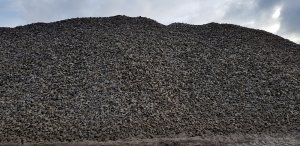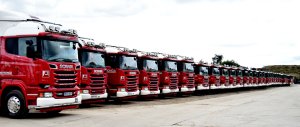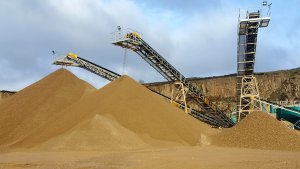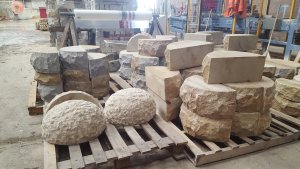We want to help you, the people who support us, get to know our business so we thought we'd answer some Armstrongs FAQs.
How would a customer go about getting a quote for stone signage?
To receive a quote about an idea for a stone sign, all you have to do is phone through to our sales department on 01204 668021 and press 1. Our friendly sales team will help you every step of the way.
How would a customer go about getting a quote about ready mix concrete?
All you need to do to receive a quick and easy quote for our ready mix concrete is to go on AMIX’s webpage and find the built in calculator which we have
HERE!
Who makes up Armstrongs Group?
Armstrongs Aggregates Ltd and AMIX RMC make up the Armstrongs Group. AMIX became a subsidiary in 2015. However AMIX was registered as an independent company in 1993.
What is Quarrying?
Quarrying is the extraction of stone or other materials from the earth.
What are aggregates?
Aggregate is a material which is made up of a load of fragments which are loosely packed together. Find more information about the whole aggregate process on our previous blog. This is part of our Armstrongs FAQs because people want to know the process behind the product and also what that product is they are being sold.

What are they used for?
There are a range of uses and applications for aggregate. Concrete is one of the uses of aggregate. Other uses include gabion baskets, MOT type 1 which can be used for pavements and the aggregate ballast on train tracks which are used for a number on reasons.
What is the difference between cement and concrete?
Cement is one of the ingredients in concrete and is a powdery substance which is made by calcining lime and clay. Calcining is the part of process where the lime and clay go through a large tunnel and heated to extreme temperatures.Mixing aggregate with water and cement creates concrete. Concrete is a material which gets stronger and stronger throughout the years and the older it gets.
What is the different between quarrying and mining?
Mining is the process of obtaining minerals and commonly coal from a mine under ground. Whereas quarrying, is the process of extracting materials from above the ground. Blasting is also a lot more common in the quarrying industry.
How many trucks do you have?
At Armstrongs, we have 70 trucks which are all driven and operated by our highly skilled drivers.

What different types of trucks do you have?
When it comes to our trucks, we at Armstrongs use only the best to get the job done. Scania trucks are the perfect vehicles for what we do and that’s why we use them exclusively for our fleet. Our flagship truck “Mayson” is an R520 which holds a huge V8 engine and is the biggest in our fleet. Other trucks like our 8 wheeler tippers consist of different models such as the G410, P380, P400, P410, P450 and the R410.
What heavy machinery do Armstrongs use?
Armstrongs have a wide arsenal of powerful and amazing machines which we use everyday. To carry out our work we must use a wide range of different machines for different uses. Currently, we have a range of different excavators which we use, these include our Hitachi ZAXIS 690LCR, ZAXIS 210LC and the ZAXIS 225USLC. They all have different uses and we utilise their strengths very well in our work.For our dump trucks, we use the behemoth that is the Bell B40E-ADT. This machine is perfect for shift large heaps of stone and aggregate with its massive power and also bigger payload. The bulldozers which we use are the best-in-class for horsepower with 214 hp.We also use Screeners and washers in the process of producing our aggregates. These are huge machines which will carry loads of aggregate through them and wash the piles so that they are ready for transport.

What environmental processes must we go through?
There are multiple environmental processes which we must go through to make sure that everything we do here is legal and Eco-friendly. By using the link provided you can take a look at all of our certificates and policies concerning health and safety, terms of sales, quality policies and much more.
https://armstrongsgroup.com/about-us/corporate-responsibility/How do we extract our stone?
We extract our stone through the process of blasting and through manual extraction with an excavator. We search for the perfect place in our quarries where we can find the type of stone that we require for the job at hand. When we have found the suitable rock face or area and the explosives have been drilled and placed, it’s time for the blast. Blasting the stone away from the earth will then allow for us to take and use it for aggregate or cut stone. This is definitely part of our Armstrongs FAQs as people love to ask us all about how we extract our stone.Manual extraction occurs when there needs to a more delicate approach to larger pieces of stone, for that used in constructions at La Sagrada Familia or for a range of cut stone products.
How do you produce bespoke cut stone?
It all starts with a call from you. Once you have told our sales team what it is you’re looking for then our team of experts in the stone shed start to work. We select the best stone for the job and load it onto one of our saws to cut into shape. Once the saw has completed its work we hand over the stone to our excellent stone masons. Here they will complete the design whilst also hand crafting the extra details with great care. From fireplaces to benches and walling stone to logos and much more, we can create anything to your exact specification.
How many quarries do you have?
We currently operate 5 quarries across the North West and Cumbria. We have
Montcliffe and
Pilkington in Horwich,
Brinscall in Chorley,
Waddington Fell in Clitheroe and
Shap in Cumbria resulting in Armstrongs having a wide span over the north west.
What can your stone be used for?
Anything. We produce Aggregate, Cut Stone and Concrete for a range of applications whereas our most popular product which we produce is aggregate. From foundations to full houses and all the extra furnishings- Our stone is suitable for all construction situations. Our highly skilled stone mason will take care of any needs our customers have.

How long does your stone last for between extractions?
This depends on demand, However we expect fifteen thousand tonnes of stone to last around two weeks before we start to run low on materials and need to extract again.
What qualifications do I need to be able to work at Armstrongs Group?
Another one of Armstrongs FAQs is must you have a HGV 1 and 2 license to become a Armstrongs driver. No specific qualifications are needed to work in our offices or on our site however a keen and willing attitude is always expected. Experience is preferable but not desired.Our careers are displayed
here.
How can we contact you?
You can now reach us in more ways than ever. If you required anymore of Armstrongs FAQs or any other information then we are available to assist you on Facebook, Twitter and Instagram, moreover we can help by phone on 01204 668021 or by email on enquiries@armstrongsgroup.com
Do you do educational trips?
We more than welcome educational and scientific trips to our sites. We have a history of school trips and researchers visiting our quarries. To enquire please email us on
enquiries@armstrongsgroup.com and we will do our best to accommodate you.
Where in the world do we send our stone?
We distribute our stone to the UK and Europe however our reach is distribution reach is global. Among the many projects we undertake we do currently ship our stone to Barcelona. The stone is used in production of the building of
La Sagrada Familia. This is something we at Armstrongs are extremely proud of and love knowing we are apart of something so huge.We hope you found our Armstrongs FAQs blog helpful. Do you have anymore questions which you'd like us to answer? Then please don't hesitate to contact us!You can follow more updates from us across our website and social platforms on
Facebook,
Instagram and
Twitter. We will also answer Armstrongs FAQs in our comments on our social medias, so don't be afraid to ask.








